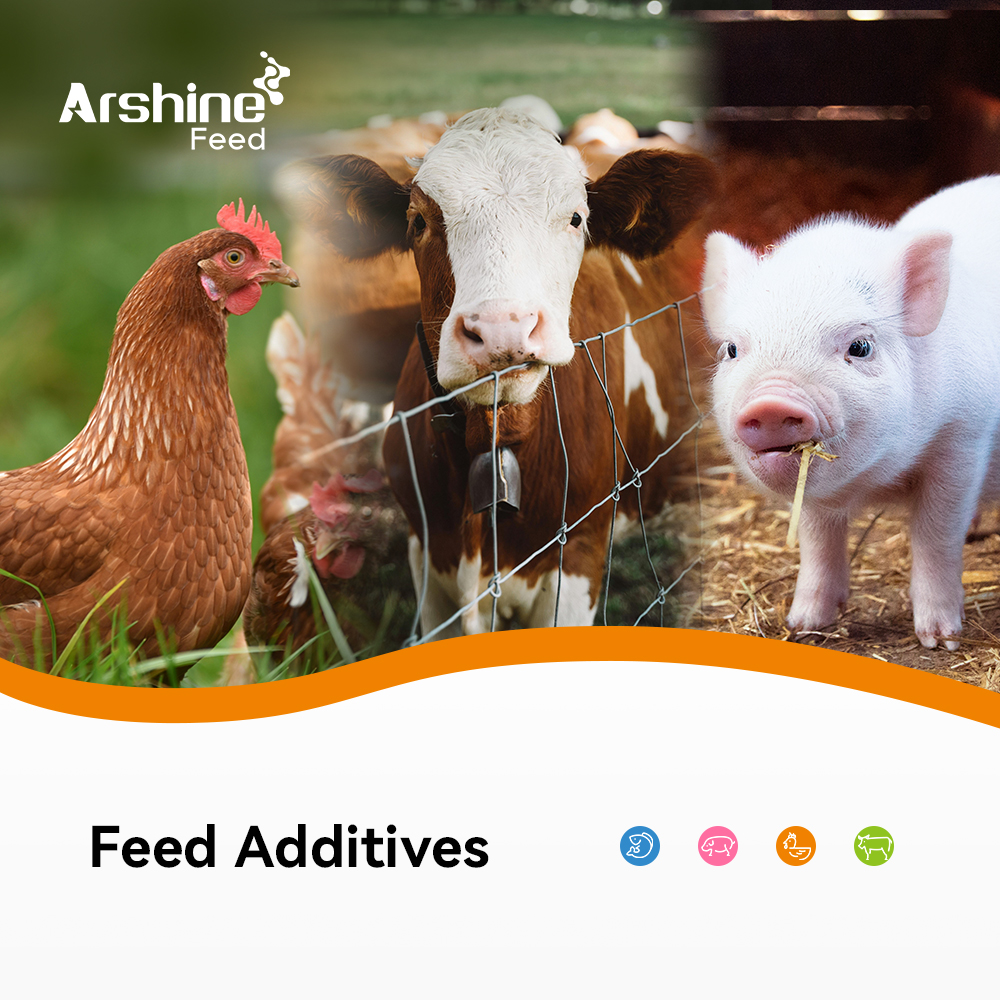

The addition of malic acid in the feed can reduce the synthesis of acetic acid, change the fermentation mode of the rumen to the direction of propionic acid fermentation, and reduce methane emission.
| TITLE OF INDEX | INDEX | RESULT | |
| Sensory requirements | Colour | White or almost white | White |
| Odor | Special sour | Special sour | |
| Organization status | Crystalline powder or particles | Crystalline powder | |
| DL-Malic acid(As C4H6O5), w/% | 99.0—100.5 | 99.9 | |
| α m(25°C ,D)/[(。).dm2.kg'] Specific rotation [α]D25°C |
-0.10—+0.10 | 0.00 | |
| Arsenic [ As] mg/kg | ≤2 | <2 | |
| Lead Pb mg/kg | ≤2 | <2 | |
| Residue on ignition w /% | ≤0.10 | 0.03 | |
| Fumaric acid w/% | ≤1.0 | 0.5 | |
| Maleic acid w/ % | ≤0.05 | 0.02 | |
| Water-insoluble matter w/ % | ≤0.1 | 0.01 | |
Malic acid, in its feed-grade form, serves several functions and has various applications in animal nutrition. Here are its functions and applications:
Acidification: Malic acid acts as an acidifier in animal feed, helping to lower the pH of the feed and create an environment that is less favorable for the growth of harmful bacteria, molds, and fungi. Acidification can improve feed hygiene and reduce the risk of feedborne diseases in animals.
Palatability Enhancement: Malic acid can enhance the palatability of animal feeds by imparting a sour taste, which may increase feed intake and improve feed conversion efficiency. Animals may find feeds containing malic acid more appealing, leading to increased consumption and better performance.
Improvement of Digestibility: Malic acid can help improve the digestibility of nutrients in animal feed by promoting the release of digestive enzymes and enhancing nutrient solubility. This can result in better utilization of feed ingredients and improved nutrient absorption in the gastrointestinal tract, leading to enhanced animal performance.
Buffering Agent: Malic acid can act as a buffering agent in animal feed, helping to stabilize pH levels and prevent fluctuations that may impact feed quality and nutrient availability. This ensures optimal conditions for digestion and nutrient absorption in animals.
Antioxidant Properties: Malic acid exhibits antioxidant properties, which help neutralize free radicals and reduce oxidative stress in animal tissues. By protecting cells and tissues from oxidative damage, malic acid supports overall health and immune function in animals, particularly during periods of stress or disease challenge.
Alternative to Antibiotics: Acidifiers like malic acid offer a natural alternative to antibiotic growth promoters commonly used in animal feed. As concerns about antibiotic resistance and residues grow, acidifiers provide a sustainable solution for promoting animal health and performance without the use of antibiotics.
Regulatory Compliance: Malic acid used in feed applications complies with regulatory standards and guidelines established by food and feed safety authorities. Its use in animal feed is regulated to ensure safe and effective use without compromising animal health or product quality.
Application in Various Animal Feeds: Malic acid can be incorporated into various types of animal feeds, including poultry, swine, cattle, aquaculture, and pet feeds, to promote acidification, improve palatability, and enhance nutrient digestibility. Its versatility makes it suitable for use in different production systems and environments.
In summary, malic acid feed grade serves as an effective acidifier, palatability enhancer, and digestive aid in animal nutrition. Its applications extend to various animal species and feed formulations, contributing to improved feed quality, digestion, and overall animal performance.
Add: Block 14, No.100, Luyun Road,Changsha 410205,China.
Mobile: +86 18874001228
Email: info@arshinefeed.com
WhatsApp: 8618874001228
WeChat: weiyuyan91